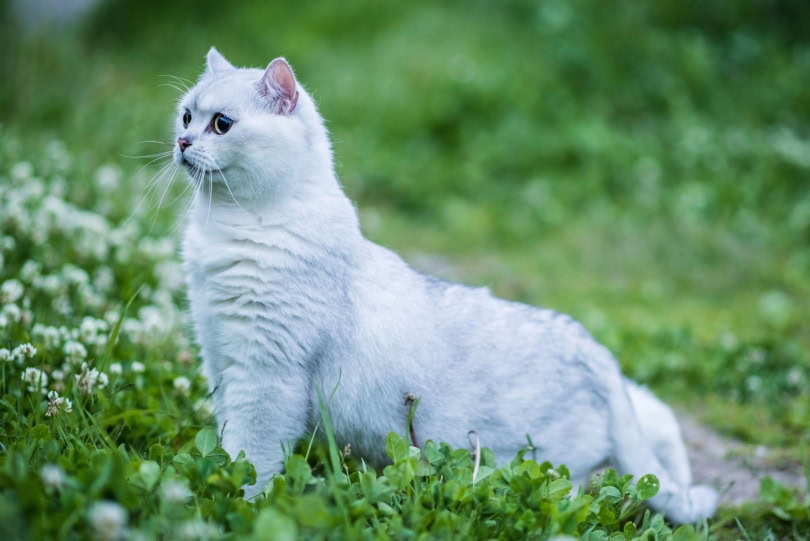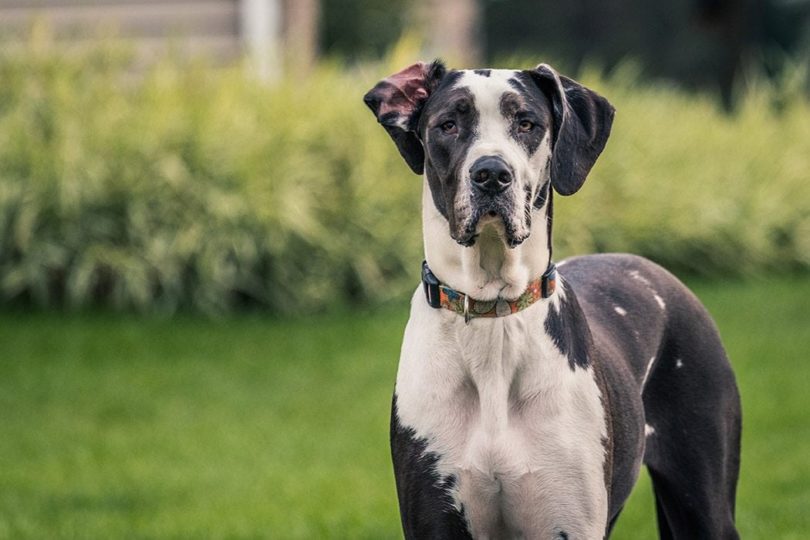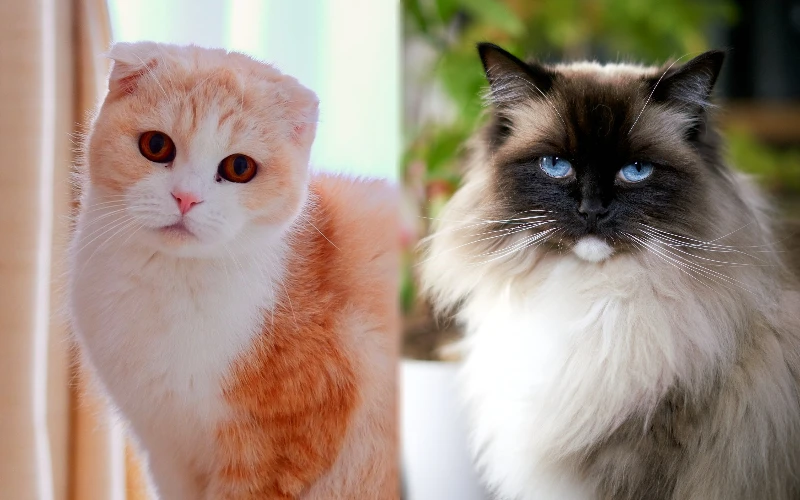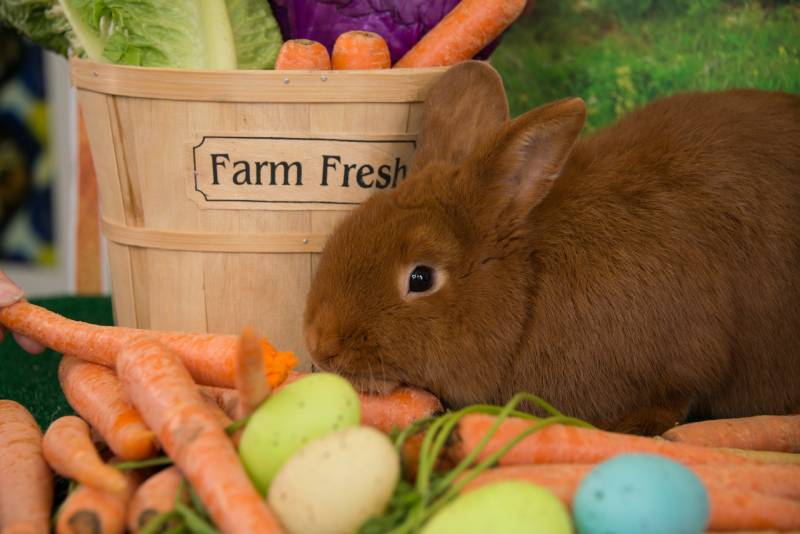Click to Skip Ahead
The British Shorthair is known for their plush fur, which comes in a plethora of colors. This medium-to-large-sized breed has a short, dense coat and a distinctive round face and head that makes them look like a cuddly teddy bear. The British Shorthair is known for being affectionate and fiercely loyal, and while they love to play, they aren’t clingy.
As the name suggests, they come from Great Britain, where they developed naturally. We discuss these beautiful cats, especially the white British Shorthair, in more depth here.

The Earliest Records of the White British Shorthair in History
Possibly the oldest cat breed in Great Britain is the British Shorthair, which makes it challenging to trace their origin story back to the beginning. However, the most agreed-upon theory is that they were once shorthaired street cats that breeders standardized and refined until they became the breed we are familiar with today.
The history that British Shorthairs share with humans is a long one, but their ancestors played an even more significant role. Their origins can be traced back to the Egyptians.1 They were then smuggled out of Egypt by the Romans, where they would protect homes from rodents.
Eventually, the Romans left their cats behind on the British Isles, where they would breed with European wildcats, creating hardier cats that were more prepared to live in cold, damp climates. For hundreds of years, these cats protected gardens, houses, barns, granaries, and the streets from rodents. It was in the 1800s that people realized how beneficial these cats were and wanted them in their homes.
British Shorthairs were among the breeds that were exhibited in England’s first organized cat show in 1871, but back then, they were known as British Blues due to the blue-gray color that was most common in this breed. This is still a popular color today, but there are other colors available. It’s believed that British Shorthairs were brought to the United States in the early 1900s, but they went by the name of Domestic Shorthairs.
The white version of this breed is actually colored, but they have a gene that effectively masks their actual color. Their fur is pure white without any spots, stripes, yellow, or smoky undertones. Their pads and muzzle should also be pure pink.
How the White British Shorthair Gained Popularity
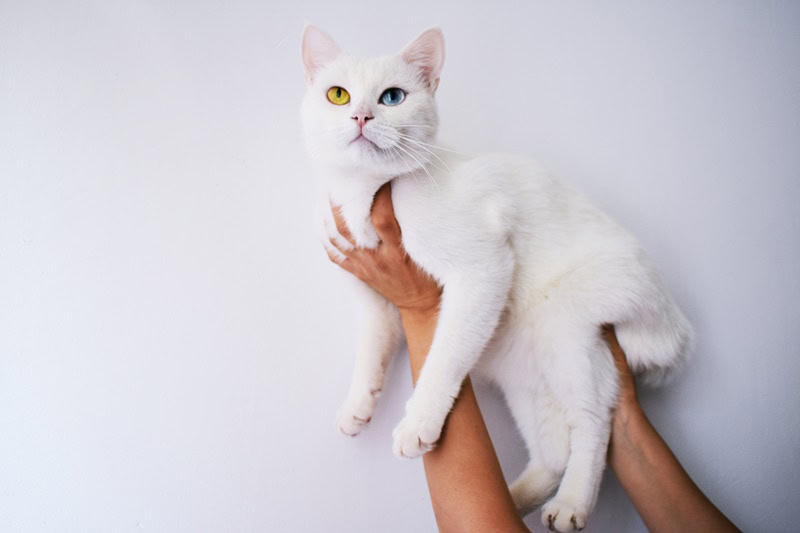
The British Shorthairs have always lived among people, and in a way, they’ve always been popular cats. While all felines are lovely, pure white ones are incredibly uncommon, and when something is unique, people tend to want it more. The white British Shorthair’s beautiful coat and startling eyes always attract attention, and it’s clear why the cat is in high demand.
Formal Recognition of the White British Shorthair
In 1980, the British Shorthair cat was formerly recognized by the Cat Fanciers Association. For your cat to be registered, they have to be pure white, and their eyes can be sapphire blue, gold, or copper.2 Odd-eyed cats can have one sapphire blue and one gold eye but with equal color depth. Their paw pads and nose must both be pink. Anything outside of these standards is disqualified.

4 Little-Known Facts About the White British Shorthair
1. White Cats Are Considered Lucky
The well-known Japanese Beckoning Cat (Maneki Neko) is often depicted as a white cat. They originated around 1870, and typically, these figurines are placed near entrances to businesses and homes to bring luck. So, having a white British Shorthair in your life could be considered lucky!
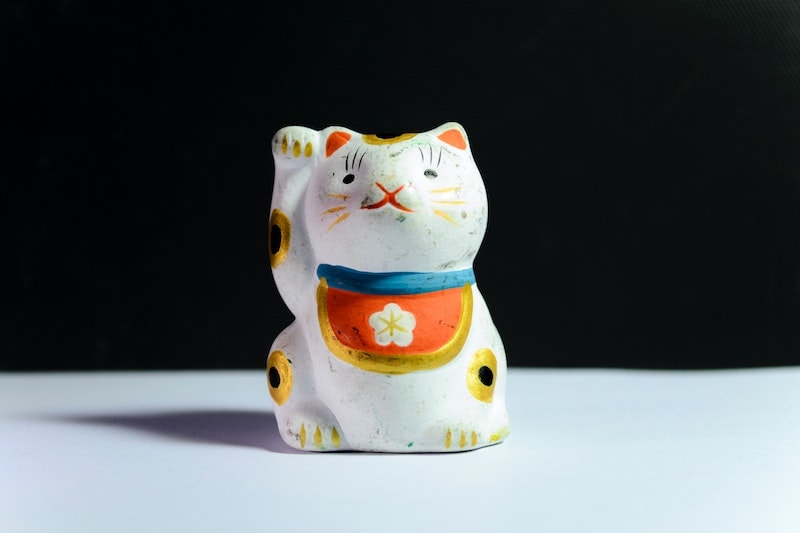
2. They’re Known to Be Chunky
With their round faces and rotund bodies, these cats are known to be a little on the chunky side. Male British Shorthairs can weigh between 9 and 17 pounds, while females weigh around 7–12 pounds.
3. They Don’t Feel Furry
Instead, people have described British Shorthairs as feeling “plushy.”
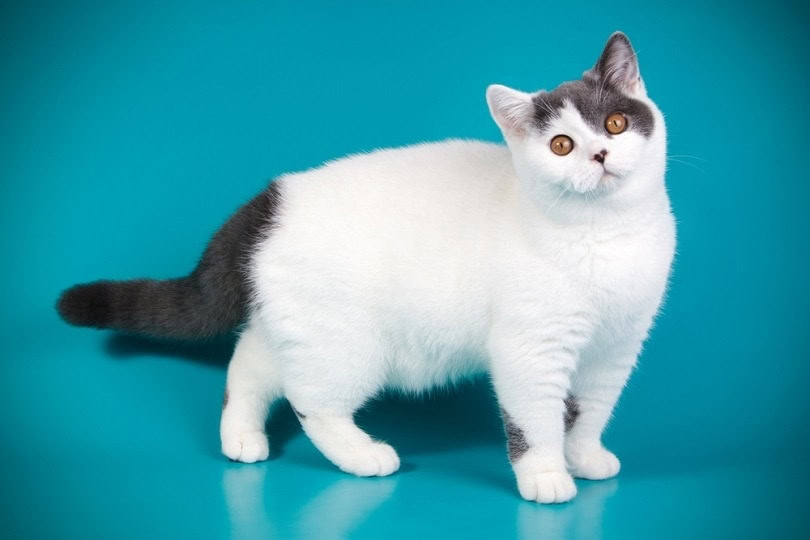
4. British Shorthairs Are Thought to Have Inspired the Cheshire Cat
Lewis Carroll’s “Alice in Wonderland” was published in 1865, and it’s thought that the inspiration for the mysterious Cheshire Cat was the British Shorthair. There is no proof of this, but given the British Shorthair’s familiar smile, it would make sense!

Does White British Shorthair Make a Good Pet?
British Shorthairs are known for being particularly calm, loving, and capable of forming strong bonds with their owners. They make the perfect addition to family life since they are quiet, calm additions to the household. They get along with other pets in the family as long as their needs are all met. Since they aren’t as high maintenance as some other breeds, they would also do well with a single owner.
British Shorthairs are fine with apartment living, as they are playful without being destructive or hyperactive. This breed is prone to being overweight, though, and obese cats are at higher risk for some health problems. A high-quality, healthy diet is crucial, as is providing your British Shorthair with good-quality exercise, so you will have to consider this before you take in one of these cats.
White cats are also more prone to sunburn than darker cats. While all cats can get sunburned, hairless and white cats are more vulnerable.

Conclusion
The White British Shorthair has a long, exciting history with humans, potentially stretching back to the Egyptians. White cats may bring good luck but also the added risk of sunburn if they enjoy lounging next to an open window, so be careful! They’re loyal, affectionate cats that make excellent pets for any family. They are still a particularly popular breed, and it’s easy to see why.
Featured Image Credit: Katerina_Aro, Shutterstock
